
Patsy Matsu Mink was an American attorney and politician from the U.S. state of Hawaii. She served in the United States House of Representatives for 24 years as a member of the Democratic Party, initially from 1965 to 1977, and again from 1990 until her death in 2002. She was the first woman of color and the first Asian-American woman elected to Congress, and is known for her work on legislation advancing women's rights and education.

The Hawaii Republican Party is the affiliate of the Republican Party (GOP) in Hawaii, headquartered in Honolulu. The party was strong during Hawaii's territorial days, but following the Hawaii Democratic Revolution of 1954 the Democratic Party came to dominate Hawaii. The party currently has little power and is the weakest state affiliate of the national Republican Party; it controls none of Hawaii's statewide or federal elected offices and has the least presence in the state legislature of any state Republican party.
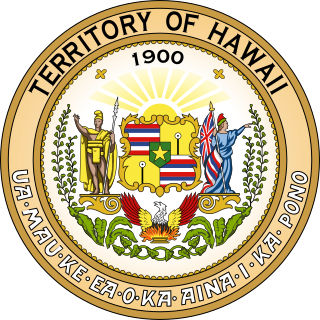
The Hawaii Territorial Legislature was the legislative body of the Territory of Hawaii from 1900 to 1959.

Sylvia Jung Luke is an American attorney and politician who is serving as the 16th lieutenant governor of Hawaii. She served as a member of the Hawaii House of Representatives for 24 years, from 1998 until her election as lieutenant governor in 2022. She is the first Korean American politician ever elected to a statewide office in the United States.
This timeline highlights milestones in women's suffrage in the United States, particularly the right of women to vote in elections at federal and state levels.

Women's suffrage was established in the United States on a full or partial basis by various towns, counties, states, and territories during the latter decades of the 19th century and early part of the 20th century. As women received the right to vote in some places, they began running for public office and gaining positions as school board members, county clerks, state legislators, judges, and, in the case of Jeannette Rankin, as a member of Congress.

William Pūnohuʻāweoweoʻulaokalani White was a Hawaiian lawyer, sheriff, politician, and newspaper editor. He became a political statesman and orator during the final years of the Kingdom of Hawaii and the beginnings of the Territory of Hawaii. Despite being a leading Native Hawaiian politician in this era, his legacy has been largely forgotten or portrayed in a negative light, mainly because of a reliance on English-language sources to write Hawaiian history. He was known by the nickname of "Pila Aila" or "Bila Aila" for his oratory skills.
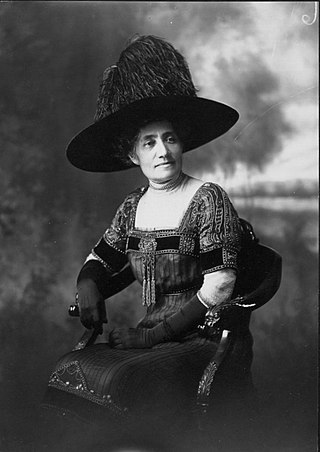
Wilhelmine Kekelaokalaninui Widemann Dowsett was a Native Hawaiian suffragist who helped organize the National Women's Equal Suffrage Association of Hawaii, the first women's suffrage club in the Territory of Hawaii in 1912. She actively campaigned for the rights of the women of Hawaii to vote prior to the passage of the Nineteenth Amendment to the United States Constitution in 1920.

Rosalie Enos Lyons Keliʻinoi was a Portuguese-Native Hawaiian politician of the Territory of Hawaii. In 1925, she became the first woman elected to the Hawaii Territorial Legislature, representing the island of Kauai.

Emilie Kekāuluohi Widemann Macfarlane was a Native Hawaiian activist and civic organizer during the late 19th and early 20th centuries She was known for her charitable work and civic involvement in Honolulu, including women's suffrage, public health, education, and the preservation of Hawaii's historical legacy.
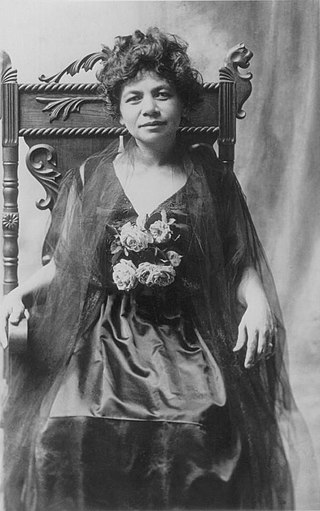
Mary Haʻaheo Atcherley was a Hawaiian activist. She was one of the first native Hawaiian women to run for public office in the Territory of Hawaii.

This is a timeline of women's suffrage in Hawaii. Hawaii went through a transition where it was first the Kingdom of Hawaii, then a political coup overthrew Queen Liliʻuokalani in 1893. Women were not allowed to vote and lost political power in the provisional government. In the same year as the coup, Wilhelmina Kekelaokalaninui Widemann Dowsett and Emma Kaili Metcalf Beckley Nakuina began to make plans to support women's suffrage efforts. When Hawaii was annexed, members of the National American Woman Suffrage Association (NAWSA) advocated for women's suffrage for the territory. In 1912, Dowsett and a diverse group of women created the National Women's Equal Suffrage Association of Hawaiʻi (WESAH). In 1915 and 1916 Prince Jonah Kūhiō Kalanianaʻole brought women's suffrage petitions to the United States Congress, but no action was taken. In 1919, suffragists from WESAH fought for women's suffrage in the territorial legislature, but were also unsuccessful. Women in Hawaii gained the right to vote when the Nineteenth Amendment became part of the United States Constitution on August 26, 1920.

Women's suffrage began in Hawaii in the 1890s. However, when the Hawaiian Kingdom ruled, women had roles in the government and could vote in the House of Nobles. After the overthrow of Queen Liliʻuokalani in 1893, women's roles were more restricted. Suffragists, Wilhelmine Kekelaokalaninui Widemann Dowsett and Emma Kaili Metcalf Beckley Nakuina, immediately began working towards women's suffrage. The Women's Christian Temperance Union (WCTU) of Hawaii also advocated for women's suffrage in 1894. As Hawaii was being annexed as a US territory in 1899, racist ideas about the ability of Native Hawaiians to rule themselves caused problems with allowing women to vote. Members of the National American Woman Suffrage Association (NAWSA) petitioned the United States Congress to allow women's suffrage in Hawaii with no effect. Women's suffrage work picked up in 1912 when Carrie Chapman Catt visited Hawaii. Dowsett created the National Women's Equal Suffrage Association of Hawaiʻi that year and Catt promised to act as the delegate for NAWSA. In 1915 and 1916, Prince Jonah Kūhiō Kalanianaʻole brought resolutions to the U.S. Congress requesting women's suffrage for Hawaii. While there were high hopes for the effort, it was not successful. In 1919, suffragists around Hawaii met for mass demonstrations to lobby the territorial legislature to pass women's suffrage bills. These were some of the largest women's suffrage demonstrations in Hawaii, but the bills did not pass both houses. Women in Hawaii were eventually franchised through the passage of the Nineteenth Amendment.
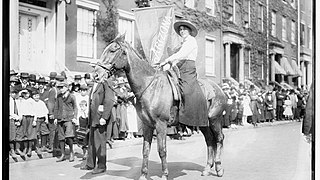
The movement for women's suffrage in Arizona began in the late 1800s. After women's suffrage was narrowly voted down at the 1891 Arizona Constitutional Convention, prominent suffragettes such as Josephine Brawley Hughes and Laura M. Johns formed the Arizona Suffrage Association and began touring the state campaigning for women's right to vote. Momentum built throughout the decade, and after a strenuous campaign in 1903, a woman's suffrage bill passed both houses of the legislature but was ultimately vetoed by Governor Alexander Oswald Brodie.

This is a timeline of women's suffrage in Arizona. The first women's suffrage bill was brought forward in the Arizona Territorial legislature in 1883, but it did not pass. Suffragists work to influence the Territorial Constitutional Convention in 1891 and lose the women's suffrage battle by only three votes. That year, the Arizona Suffrage Association is formed. In 1897, taxpaying women gain the right to vote in school board elections. Suffragists both from Arizona and around the country continue to lobby the territorial legislature and organize women's suffrage groups. In 1903, a women's suffrage bill passes, but is vetoed by the governor. In 1910, suffragists work to influence the Arizona State Constitutional Convention, but are also unsuccessful. When Arizona becomes a state on February 14, 1912, an attempt to legislate a women's suffrage amendment to the Arizona Constitution fails. Frances Munds mounts a successful ballot initiative campaign. On November 5, 1912, women's suffrage passes in Arizona. In 1913, the voter registration books are opened to women. In 1914, women participate in their first primary elections. Arizona ratified the Nineteenth Amendment on February 12, 1920. However, Native American women and Latinas would wait longer for full voting rights.

In 1893, Colorado became the second state in the United States to grant women's suffrage and the first to do so through a voter referendum. Even while Colorado was a territory, lawmakers and other leaders tried to include women's suffrage in laws and later in the state constitution. The constitution did give women the right to vote in school board elections. The first voter referendum campaign was held in 1877. The Woman Suffrage Association of Colorado worked to encourage people to vote yes. Nationally-known suffragists, such as Susan B. Anthony and Lucy Stone spoke alongside Colorado's own Alida Avery around the state. Despite the efforts to influence voters, the referendum failed. Suffragists continued to grow support for women's right to vote. They exercised their right to vote in school board elections and ran for office. In 1893, another campaign for women's suffrage took place. Both Black and white suffragists worked to influence voters, gave speeches, and turned out on election day in a last-minute push. The effort was successful and women earned equal suffrage. In 1894, Colorado again made history by electing three women to the Colorado house of representatives. After gaining the right to vote, Colorado women continued to fight for suffrage in other states. Some women became members of the Congressional Union (CU) and pushed for a federal suffrage amendment. Colorado women also used their right to vote to pass reforms in the state and to support women candidates.
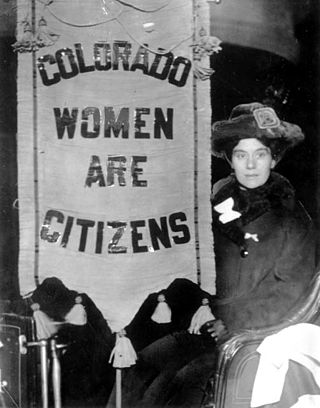
This is a timeline of women's suffrage in Colorado. Women's suffrage efforts started in the late 1860s. During the state constitutional convention for Colorado, women received a small win when they were granted the right to vote in school board elections. In 1877, the first women's suffrage referendum was defeated. In 1893, another referendum was successful. After winning the right to vote, Colorado women continued to fight for a federal women's suffrage amendment. While most women were able to vote, it wasn't until 1970 that Native Americans living on reservations were enfranchised.

Suffrage was available to most women and African Americans in New Jersey immediately upon the formation of the state. The first New Jersey state constitution allowed any person who owned a certain value of property to become a voter. In 1790, the state constitution was changed to specify that voters were "he or she". Politicians seeking office deliberately courted women voters who often decided narrow elections. This was so the Democratic-Republican Party had an advantage in the presidential election of 1808.

This is a timeline of women's suffrage in New Jersey. Women and African Americans had the right to vote in New Jersey until the state constitution was changed in 1807, disenfranchising all but white men. Any early suffrage protest was taken by Lucy Stone in 1857 who refused to pay her property taxes because she could not vote. Additional attempts to make women more equal under the law took place in the 1880s and 1890s. There were also several court cases that challenged women's right to vote in the state. Eventually, a voter referendum on a state constitutional suffrage amendment took place in 1915, however the measure was voted down. Activists continued to fight both in the state and to protest in Washington, D.C. as Silent Sentinels. By February 10, 1920, New Jersey ratified the Nineteenth Amendment.

















